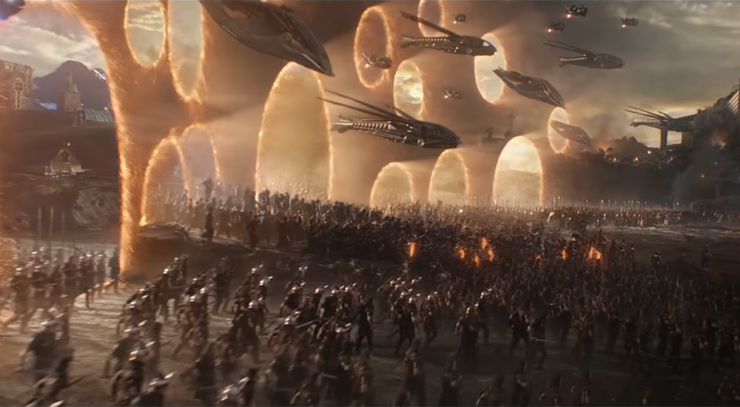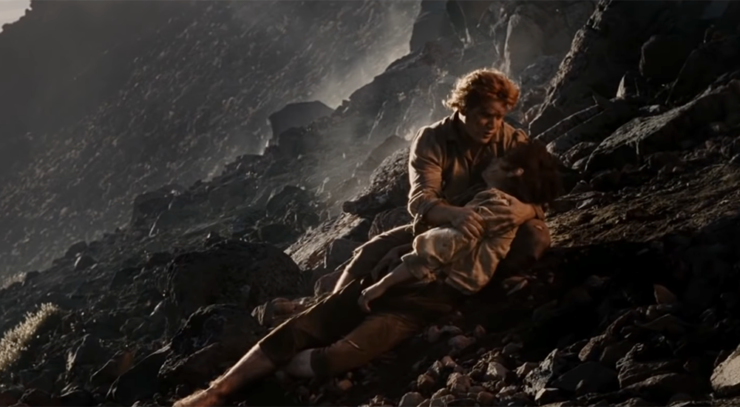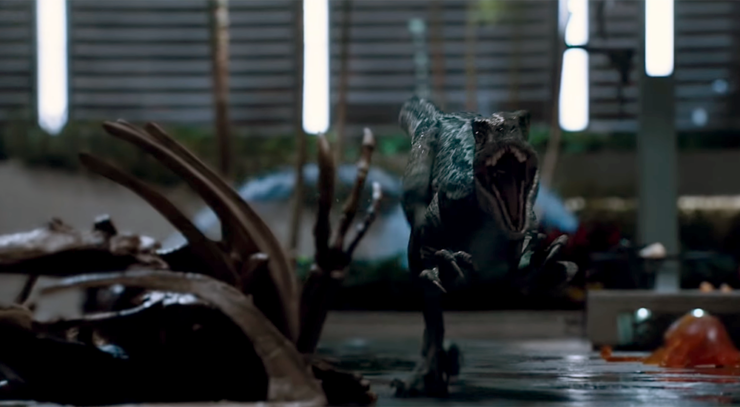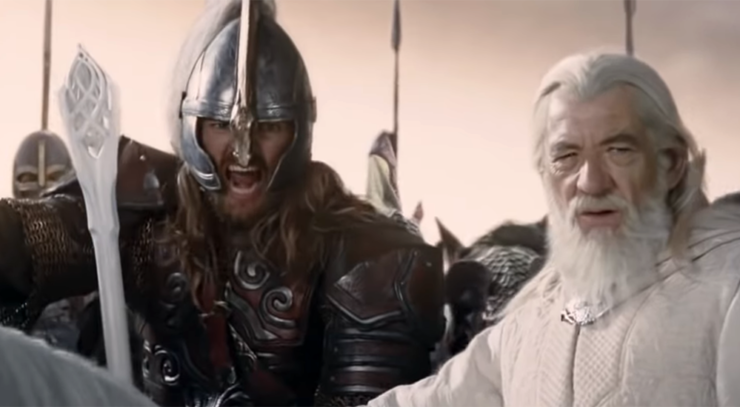When we watch movies, my mother always cries at goodbyes. Me, I cry at arrivals. This is just one of the many things that separate us.
She cries in the moments you might expect someone to cry: the ending of Where the Red Fern Grows; the opening montage of Up; when Mufasa is killed. My dad loves telling the story about catching her red-eyed, watching My Little Pony and weeping. I came home from work and I thought something terrible had happened, she was bawling so hard, he said. I thought someone was dead. But it was just Pinkie Pie and Rainbow Dash exchanging a tearful farewell.
As a kid, I would roll my eyes at her every time: You’re crying? Again? It’s an early example of the ways we would never understand each other. Cinematic sadness rarely gets me down. You think I cried for Jack in Titanic? I did not.
Now that I’m older, though, when and what brings me to tears is starting to feel more significant. I can’t sit through the moment the Riders of Rohan appear in Lord of the Rings: The Two Towers without my eyes watering up. All night at Helm’s Deep, Théoden’s army, alongside Aragorn, Legolas, and Gimli, have fought greatheartedly against the Uruk-hai, but they have lost their ground. They ride out one more time as dawn arrives, but the Uruk are just too many. The heroes are overwhelmed. It is abundantly clear they are about to lose.
And then.
Tolkien says it best himself: “There suddenly upon a ridge appeared a rider, clad in white, shining in the rising sun. Over the hills the horns were sounding. Behind him, hastening down the long slopes, were a thousand men on foot; their swords were in their hands. Amid them strode a man tall and strong. His shield was red. As he came to the valley’s brink, he set to his lips a great black horn and blew a ringing blast.”
In the Peter Jackson movie version, they are on horseback. The music swells. On the horizon, Gandalf astride a white horse. Next to him Éomer, shouting, “To the King!” It’s the moment that changes the tide of the battle: from there, it is minutes’ work for the heroes to gain ground, for the Uruk to fall back, for the day to be won.
The Two Towers premiered in 2002, but I would think of this moment again over ten years later while watching Jurassic World with a friend. When Owen (Chris Pratt) held the head of the dying Apatosaurus, I thought, Mom would cry so hard at this. I was shaking my head. Don’t get me wrong: it’s a sad scene. I just didn’t have any tears.
That is, until later, during the final battle scene with the Indominus Rex. Things are going poorly for our heroes. Indominus has pretty much decimated all the raptors. The T-Rex, our heroes’ last hope, is down. Indominus approaches; she opens her jowls. It is abundantly clear they are about to lose.
And then.
There is a beat, just one, in the music. In the distance, a small dinosaur scream. The music lifts and—there!—the raptor Blue charges out of the wreckage and launches toward the back of the beast.
That’s where I started crying, all snotty and sniffling and obvious, surprising myself and the friend next to me.
Turns out I am a sucker for this kind of moment. I’m talking goosebumps and tears and guttural sounds. Even writing this, I’ve given myself chills.
Let me give you another example (spoilers for the Avengers franchise ahead!): I was completely dry-eyed when half of the Avengers turn to dust in Infinity Wars—even though both Dr. Strange and Spider-Man, my favorites, disappear—but I completely lost it in Endgame, when Thanos has beaten Captain America nearly senseless, and as Cap rises again, there’s a soft, small voice in his ear… cue Sam: “On your left.”

I’ve taken to calling this type of narrative turn “the rally,” or “the Riders of Rohan phenomenon,” after the scene when I first noticed it, and the effect it has on me. I’ve tried googling it—the specific moment I’m talking about doesn’t appear to have a name. It’s important to stress that the rally is not the climax—it’s certainly part of what one could call “the climactic scene,” but it’s not the actual moment of climax (after all, when the Riders of Rohan appear on the horizon, the battle isn’t actually over).
Sometimes the two might come so closely together it seems to be the same, but in other stories—like Jurassic World—it’s clear they’re separate: The RoR moment is when Blue arrives on the scene; the climax is when Indominus Rex is snapped up by the Mosasaurus some minutes later. Or in The Return of the King, the climax is when Frodo casts the One Ring into the fires of Mount Doom; the RoR moment is several scenes before, when Frodo, defeated, collapses on the ground, and Sam says, “I can’t carry it for you, but I can carry you.” So the RoR moment falls somewhere between “the dark night of the soul” and the climactic scene—indeed, it marks the transition from one to the other.
A term that almost comes close to defining this moment is Tolkien’s own word “eucatastrophe,” or “the sudden happy turn in a story which pierces you with a joy that brings tears.” You’d think, the way I always cry at the RoR phenomenon, this term would fit perfectly; but while it applies to scenes related to what I’m describing, it isn’t exactly the same. For example, Homeward Bound: The Incredible Journey features a eucatastrophe. Chance the bulldog and Sassy the cat have made it home, but Shadow the Golden Retriever isn’t with them—he couldn’t get out of the mud pit. His young owner, Peter, stares across the field. He waits. “He was old,” he says. “It was too far.” He turns back toward the house—and then. On the horizon, a golden head appears. There’s Shadow, coming home. There’s Peter, running. And there’s me…well, you know.
In this case, Shadow appearing on the ridge is a eucatastrophe. But it’s not a Riders of Rohan phenomenon. Tolkien calls Christ’s resurrection a eucatastrophe. In his own work, a frequently cited example is when Gollum attacks Frodo and thereby ensures the destruction of the One Ring. Neither of these are Riders of Rohan moments, either.
What’s the distinction I’m making between the Riders of Rohan phenomenon and eucatastrophe? Consider the difference between when Gollum fights Frodo at the edge of Mount Doom and the earlier moment when Sam carries Frodo. What makes one a RoR moment and the other not is simple: friendship. Gollum’s attack on Frodo is random, violent, and selfish, and the resulting happy ending is mere coincidence (a “sudden happy turn”); Sam makes the decision to help Frodo in his time of need and their resulting success is made possible through teamwork. So while you might argue that all RoR moments are eucatastrophes, not all eucatastrophes are RoR moments. The Riders of Rohan phenomenon is a specific kind of eucatastrophe that warrants a closer look.
The RoR phenomenon should likewise not be confused with deus ex machina (literally “god from the machine”), the well-known narrative device in which an unwinnable situation is resolved by the sudden appearance of a deity or other unlikely occurrence outside of the hero’s control. In The Lord of the Rings, the Eagles are the prime example of deus ex machina—such sudden arrivals of aid, though serving a similar narrative function as the Riders of Rohan, are in fact quite distinct (and don’t have the same effect on me, personally). It boils down, again, to the relationships and motivations involved: Sam is Frodo’s partner, someone to fight with but not for him. And that’s quite different from a mystical mostly-absent feathery creature magically dispatched only in times of great need.

To qualify as a Riders of Rohan phenomenon, then, the relationships must be between comrades: Sam carrying Frodo on his back. The Avengers surrounding Cap. A raptor, fighting a much larger predator for the sake of a human she loves and has bonded with. The Rohirrim, coming to the aid of the king who’d banished them. People who would have otherwise been alone suddenly aren’t. And in all these cases, it’s their friends that are there for them—not coincidence, not a divine being, not even a parent or authority figure, but the people they have chosen, who have chosen them.
I’m interested in naming and studying this key rally or turning point both as a narrative tool and for its cultural significance. While I don’t intend to set up a false dichotomy—plenty of people cry at sad and joyful scenes, or never cry at movies at all—I asked other sci-fi and fantasy fans how they respond to the Riders of Rohan appearing on the horizon, and I discovered I’m far from the only one who cries exclusively at that moment. Several conversations in several bars (seriously, ask anyone who knows me—I never shut up about this) revealed many others in my chosen communities who felt the same. One friend explained that “sad movies are just like meh” to her—but show her “moments where people find a ray of hope in the midst of despair,” she said, “and I am broken.”
What is it about this moment that speaks to so many people? What is so powerful about those figures on the horizon? Does it have to do with hope? The tenacity of the human spirit?
Some people I’ve spoken with think so. Several of them explained that these displays of “hopefulness in the face of seemingly impossible odds” used to be really moving to them. Those who are not as affected by the RoR phenomenon as they used to be now feel more connected to the moments of complete despair just before it. They wondered if the change had occurred because they were feeling more cynical or pessimistic about the world these days, which suggests that the Riders of Rohan are a symbol of optimism, and that it may be this metaphorical message that viewers are responding to.
I certainly see how this might explain why these moments matter, but for me, that’s not quite it. After all, though I’m deeply moved when Aragorn convinces Théoden to ride out with him in the name of Rohan—that mouse-charging-a-lion display of optimism and courage—I don’t actually cry until I see those riders on the horizon. I think the real heart of what makes this phenomenon so powerful is in the very name I’ve given it: Riders—plural, as in a group—of Rohan—as in belonging to a place, a community.
This isn’t just a “sudden happy turn” in a narrative: as I’ve argued, what sets these scenes apart from other kinds of eucatastrophes is that the RoR phenomenon is specifically a choice made by a community. This is the moment your team shows up. Another friend agreed, explaining, “What makes these scenes so important is that often it’s chosen family who is arriving in these moments of great need, when things are darkest and most unwinnable.” She stressed the importance of “chosen family” for “marginalized people, queer people, single people,” and explained that “having people show up for you (especially in force) when you’re in crisis…is something deeply felt for people with chosen family in particular.”

In other words, it matters that in the Riders of Rohan phenomenon the reinforcements are not religious entities or even family members, but peers and pals. It matters to people who have been isolated for their race, religion, sexuality, gender. It matters to people who don’t get along with their mothers.
Though there are several kinds of narratives that might contain such a rally (sports movies come to mind—and this “Lost Puppy” Budweiser commercial, which is only one minute long and still makes me cry), there is something within the RoR phenomenon that feels unique to science fiction and fantasy genres. For me, what science fiction and fantasy stories do best is make spaces to belong for those who traditionally do not belong. Nothing says I don’t fit in here like stories about superheroes, aliens, hobbits leaving home.
In his essay “On Fairy Stories,” Tolkien speaks to the “Consolation of the Happy Ending” being a requirement of fantasy—the guarantee of dawn after darkness. But what I want to emphasize is that the quality of Companionship is just as necessary, if not more so, than the three aspects—“Recovery, Escape, Consolation”—that Tolkien finds vital to the fantasy genre (after all, “Frodo wouldn’t have got far without Sam”).
Such stories allow people who have long felt on the outside of society, isolated perhaps even from their own families, to find representations of themselves in these narratives. And for such viewers—those like me, whose life has been spent searching for family who sees the world like I do—I argue that the greatest “Consolation” of the fantasy genre isn’t the happy ending: it’s Companionship. The promise not just of dawn but of community. Even more than that: the implication that it is the community who will bring the dawn.
That’s why I cry. It’s not simply because it’s happy. It’s not for optimism or hope or even joy that tears come to my eyes when the Riders of Rohan, in whatever form, in whatever film, suddenly appear: A voice on your left. Your herd, your team, at your back. These characters aren’t a metaphor or symbol; they’re just present. I’m crying because someone showed up.
 Samantha Edmonds is the author of the prose chapbooks Pretty to Think So (Selcouth Station Press, 2019) and The Space Poet (forthcoming from Split Lip Press). Her nonfiction and cultural essays have been published in Ploughshares, The Rumpus, Literary Hub, and VICE, among others, and her fiction appears in such journals as Ninth Letter, Michigan Quarterly Review, Mississippi Review, and Black Warrior Review. She serves as the Assistant Fiction Editor for Sundress Publications and the Fiction Editor for Doubleback Review. A PhD student of creative writing at the University of Missouri, she currently lives in Columbia.
Samantha Edmonds is the author of the prose chapbooks Pretty to Think So (Selcouth Station Press, 2019) and The Space Poet (forthcoming from Split Lip Press). Her nonfiction and cultural essays have been published in Ploughshares, The Rumpus, Literary Hub, and VICE, among others, and her fiction appears in such journals as Ninth Letter, Michigan Quarterly Review, Mississippi Review, and Black Warrior Review. She serves as the Assistant Fiction Editor for Sundress Publications and the Fiction Editor for Doubleback Review. A PhD student of creative writing at the University of Missouri, she currently lives in Columbia.










